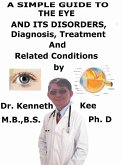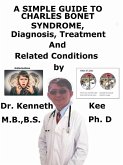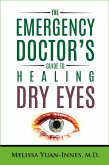And for tired eyes every light is too bright, and for tired lips every breath too heavy, and for tired ears every word too much.
Georg Buchner
As a doctor who has to use the computer daily to write his books, sometimes a few hours at a time, my eyes do become tired and strained from looking at the computer.
When this happens, I would try to take breaks and look out the windows to see some greenery before returning to write.
Old eyes are particularly vulnerable to eye strain and tiredness.
Tired eyes are particularly present in old writers.
Tiredness can happen in everybody's eyes now and again but asthenopia (or eye strain) is the specific name for the feeling of the eyes being tired, sore, or even mildly painful.
Asthenopia can happen in a person after looking at a phone or computer screen for a long time, particularly in low-light settings.
Asthenopia is the effect of prolonged use of the muscles that regulate the movements of the eye, and specifically of the pupils (the dark circles of the eye).
Asthenopia (or eye strain) is a disorder that is caused by overuse of the eyes, specifically in situations of low light, strong focus, or using the eyes for long periods of time without resting them.
Asthenopia is also known as eye strain.
With eye strain, the patient may feel that the eyes are tired, sore or painful.
Looking at a screen for a long time can make the person feel this way.
This feeling happens after extended use of muscles in the eyes such as the muscles that move the eyes and control the pupils (the dark centers of the eyes).
Some people may be more susceptible to eye strain.
People with dry eyes or red eyes often may have eye strain.
People who have a vision disorder but do not wear glasses or contact lenses may also develop eye strain.
The eyes like any part of the body have a restricted ability to do the work before it tires.
The eyes are expected to work continually for 16 hours or more every day and to continue functioning at its optimum throughout the waking hours.
Eye fatigue is often not well understood and it seldom is damaging to vision in the long term.
The eyes are said to feel tired or looks tired by a person without understanding what this means.
Often thus refers to eyestrain but there comes a point where the eyes could not take the continuing strain any further.
Ultimately the eye becomes fatigued.
Fatigued or tired eyes are not about droopy eyelids or dark bags under the eyes.
The major symptoms in tired eyes are largely similar to eyestrain:
Dryness of the eyes although there may initially be watery eyes.
Redness of the eyes from dryness and overuse.
Disturbances in vision such as blurring or even doubled vision.
Soreness of the eyes, burning eyes and eventually even eye pain.
Light-headedness and headaches.
People with dry eyes or who do not use corrective lenses (either eyeglasses or contact lenses) are more prone to develop asthenopia than:
Those that have regular breaks from their screen time,
Those who blink frequently or do other kinds of eye exercises, and
Those who wear the proper corrective eyewear.
People who use contact lens for long hours or do close range work are likely to develop asthenopia.
Other ways of decreasing eye strain and tired eyes is to fine-tune the lighting on the screen and to work in environments that have better light.
Rest of the eyes is the best way to treat tired eyes.
TABLE OF CONTENT
Introduction
Chapter 1 Asthenopia (Tired Eyes)
Chapter 2 Causes
Chapter 3 Symptoms
Chapter 4 Diagnosis
Chapter 5 Treatment
Chapter 6 Prognosis
Chapter 7 Dry Eyes...
Dieser Download kann aus rechtlichen Gründen nur mit Rechnungsadresse in A, B, CY, CZ, D, DK, EW, E, FIN, F, GR, H, IRL, I, LT, L, LR, M, NL, PL, P, R, S, SLO, SK ausgeliefert werden.









